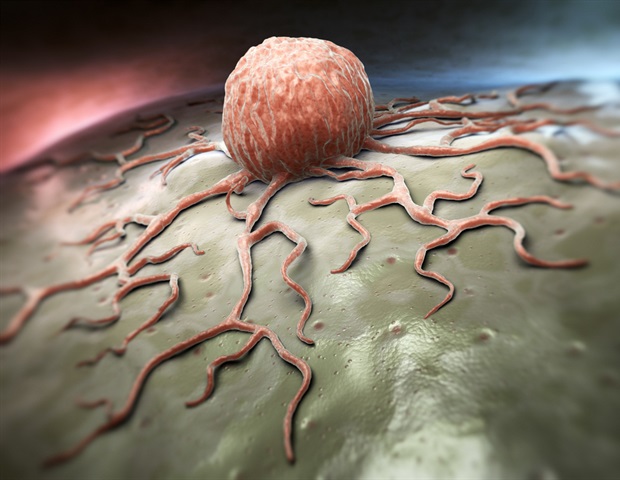Report on the Tumor Microenvironment in Osteosarcoma and Its Alignment with Sustainable Development Goals (SDGs)
Introduction
Osteosarcoma, the most common primary bone cancer affecting adolescents, presents significant treatment challenges due to its high metastatic potential and limited response to conventional therapies. The complex tumor microenvironment (TME) in osteosarcoma has emerged as a critical factor influencing disease progression and treatment resistance. This report emphasizes the importance of understanding the TME in osteosarcoma within the framework of the United Nations Sustainable Development Goals (SDGs), particularly SDG 3: Good Health and Well-being, and SDG 9: Industry, Innovation, and Infrastructure.
The Role of the Immune Landscape in Osteosarcoma TME
The immune components within the osteosarcoma microenvironment play a pivotal role in tumor progression. Key elements include:
- Tumor-associated macrophages (TAMs)
- Myeloid-derived suppressor cells (MDSCs)
- Regulatory T cells
These immune cells create an immunosuppressive niche that enables cancer cells to evade immune surveillance. The presence of pro-inflammatory cytokines and immunosuppressive factors further complicates the immune response, contributing to drug resistance and metastatic spread. Current therapeutic strategies focus on reprogramming immune cells and enhancing anti-tumor immunity, aligning with SDG 3 by promoting innovative health solutions.
Extracellular Matrix and Stromal Components
The extracellular matrix (ECM) and stromal cells provide both structural and biochemical support to osteosarcoma cells, influencing tumor behavior and treatment response. Key stromal components include:
- Fibroblasts
- Mesenchymal stem cells
- Endothelial cells
These cells secrete growth factors, cytokines, and angiogenic signals that foster a pro-tumorigenic microenvironment, promoting invasion, metastasis, and chemotherapy resistance. Targeting the cross-talk between stromal and cancer cells represents a promising research area aimed at disrupting tumor-promoting pathways, contributing to SDG 9 by fostering innovation in medical research.
Hypoxia and Tumor Adaptation
Hypoxia is a defining characteristic of the osteosarcoma TME, leading to:
- Genetic instability
- Increased angiogenesis
- Therapy resistance
The activation of hypoxia-inducible factors (HIFs) facilitates tumor adaptation and survival under low-oxygen conditions. Emerging therapies targeting HIF signaling aim to reduce the aggressiveness of osteosarcoma cells and enhance treatment sensitivity, supporting SDG 3 by advancing therapeutic innovation.
Advances in Targeted Therapies and Immunotherapy
Recent developments in osteosarcoma treatment include:
- Immune checkpoint inhibitors
- CAR-T cell therapy
- Monoclonal antibodies
- Precision medicine targeting tumor-specific genetic alterations and signaling pathways
These approaches harness the body’s immune system and genetic insights to combat cancer more effectively, directly contributing to SDG 3 by improving health outcomes and promoting well-being.
Conclusion and Future Directions
Understanding the dynamic interactions within the osteosarcoma microenvironment is essential for developing effective, personalized treatment strategies. By targeting key TME components, researchers aim to overcome drug resistance, improve patient outcomes, and foster innovative therapies. These efforts align with the Sustainable Development Goals by advancing health innovation (SDG 3) and supporting sustainable industry and infrastructure development (SDG 9), ultimately contributing to the global fight against cancer.
References
Yu, Y., et al. (2025). Tumor microenvironment in osteosarcoma: From cellular mechanism to clinical therapy. Genes & Diseases. doi.org/10.1016/j.gendis.2025.101569

1. Sustainable Development Goals (SDGs) Addressed or Connected
- SDG 3: Good Health and Well-being
- The article focuses on osteosarcoma, a form of cancer, highlighting issues related to disease progression, treatment resistance, and innovative therapies, all central to ensuring healthy lives and promoting well-being.
- SDG 9: Industry, Innovation and Infrastructure
- The article discusses advances in targeted therapies, immunotherapy, and precision medicine, reflecting innovation in medical research and healthcare infrastructure.
- SDG 4: Quality Education
- By disseminating scientific knowledge about tumor microenvironment and treatment strategies, the article supports education and awareness in health sciences.
2. Specific Targets Under Those SDGs Identified
- SDG 3: Good Health and Well-being
- Target 3.3: By 2030, end the epidemics of AIDS, tuberculosis, malaria and neglected tropical diseases and combat hepatitis, water-borne diseases and other communicable diseases — osteosarcoma, while not communicable, falls under the broader goal of reducing mortality from non-communicable diseases including cancer.
- Target 3.4: By 2030, reduce by one third premature mortality from non-communicable diseases through prevention and treatment and promote mental health and well-being — the article’s focus on overcoming drug resistance and improving therapies aligns with this target.
- Target 3.b: Support the research and development of vaccines and medicines for the communicable and non-communicable diseases that primarily affect developing countries — the article’s emphasis on new therapeutic approaches and immunotherapy is relevant here.
- SDG 9: Industry, Innovation and Infrastructure
- Target 9.5: Enhance scientific research, upgrade the technological capabilities of industrial sectors — the article’s discussion on precision medicine, CAR-T cell therapy, and immune checkpoint inhibitors reflects this target.
- SDG 4: Quality Education
- Target 4.7: By 2030, ensure all learners acquire knowledge and skills needed to promote sustainable development — dissemination of advanced medical knowledge as in the article supports this target.
3. Indicators Mentioned or Implied to Measure Progress
- SDG 3 Indicators
- 3.4.1: Mortality rate attributed to cardiovascular disease, cancer, diabetes or chronic respiratory disease — implied by the focus on reducing osteosarcoma mortality through improved therapies.
- 3.b.1: Proportion of the population with access to affordable medicines and vaccines on a sustainable basis — implied by the development and accessibility of new immunotherapies and targeted treatments.
- SDG 9 Indicators
- 9.5.1: Research and development expenditure as a proportion of GDP — implied by the article’s emphasis on ongoing research and development in osteosarcoma therapies.
- 9.5.2: Researchers (in full-time equivalent) per million inhabitants — implied by the scientific research efforts described.
- SDG 4 Indicators
- 4.7.1: Extent to which learners acquire knowledge and skills for sustainable development — implied by the dissemination of scientific knowledge and education through articles like this.
4. Table of SDGs, Targets, and Indicators
| SDGs | Targets | Indicators |
|---|---|---|
| SDG 3: Good Health and Well-being |
|
|
| SDG 9: Industry, Innovation and Infrastructure |
|
|
| SDG 4: Quality Education |
|
|
Source: news-medical.net







